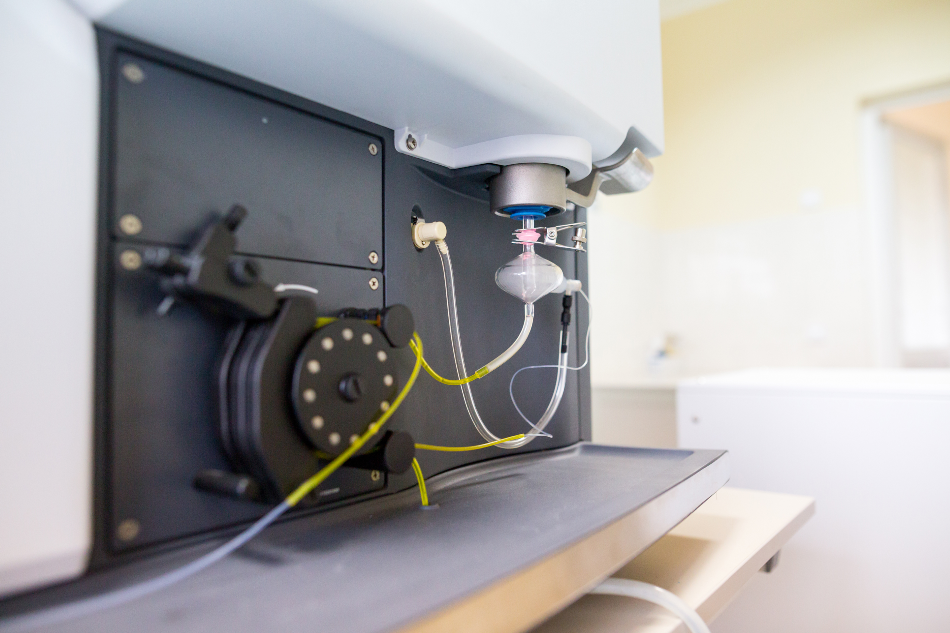Article updated on 15 December 2020

Image Credit: Sodel Vladyslav/Shutterstock.com
Optical emission and atomic emission spectrometers are two methods of analysis that use quantitative measurements of the optical emission from atoms to identify and calculate chemical constituent concentration. The atoms of focus are at higher energy than the ground state: once they are vaporized, atomized by a flame, plasma, or discharged, they become excited and get to the higher energy state needed for analysis by both emission spectrometers.
Optical Emission Spectroscopy
Optical emission spectroscopy is triggered by the spark between an electrode and a metal sample; this spark exerts electrical energy and brings vaporized atoms to an excited state. When atoms reach this high energy state, they are within what is known as discharge plasma. One element is able to create a variant of characteristic emission spectral lines, and the high energy atoms produce an individual emission spectrum that coincides with each element.
The light that is made by the discharge is seen as an array of the spectral lines generated by the sample’s elements. Each spectrum’s intensity is reliant upon the congregation of the element in the sample, and light is dispersed by a diffraction grating in order to release the emission spectrum for the chosen elements. Photomultiplier tubes are able to detect the spectrum’s presence or lack of, as well as the intensity of the spectrum in order to conduct quantitative and qualitative analyses of the elements.
Optical emission spectrometry typically uses spark, glow, or direct-current discharge to stimulate excitation discharge. Despite this, optical emission spectrometry also enables inductively coupled plasma optical emission spectrometry, also known as ICP. ICP optical emission spectrometry makes coupled plasmas the excitation source for the atoms.
Atomic Emission Spectroscopy
The chemical analysis of AES, or atomic emission spectroscopy, determine the quantity of an element in a single sample. This method works by using the intensity of light emitted from a spark, flame, arc, or plasma at a certain wavelength. In the emission spectrum, the intensity of discharged light corresponds to the number of atoms of the element, and the wavelength of the atomic spectral line reveals the element’s identity.
When light is triggered by arcs or sparks, atomic emission spectroscopy will examine metallics in solid substances. This method involves an electric arc or spark to pass through the substance, the substance then increases in temperature and subsequently the atoms are excited. As these atoms reach higher energy levels they begin to emit light at characteristic wavelengths. If there are any non-conductive materials involved in the sample, the substance is blended with graphite powder to stimulate conductivity.
If the light is being sourced by a flame, a sample substance will interact with the flame, the heat radiating from the flame breaks down the material and forms free atoms. As the thermal energy excites the atoms, they begin to reach a higher state of energy. Once these elements begin to radiate light at a characteristic wavelength, they can be identified by the spectrometer.
Conclusion
Both optical emission spectroscopy and atomic emission spectroscopy are used to characterize and identify the emissions from atoms, this can be: x-rays, electrons, and optical photons. AES identifies the elemental composition through different spectrums, typically electromagnetic or mass. If an electromagnetic approach is pursued, this is a form of optical atomic spectroscopy. In many situations, atomic absorption is the most frequently applied method of the three - it is said to present more advantages over atomic emission and atomic fluorescence.
In the long run, OES, or optical emission spectroscopy, is a more precise branch of atomic emission spectroscopy. Optical emission spectroscopy is a designated part of atomic emission spectroscopy, and could fundamentally be labeled as AES. However, OES methods identify and examine optical emissions with optical spectrometers. In addition to OES, atomic emission spectroscopy has also generated two other techniques for wavelength examination, known as atomic absorption and atomic fluorescence.
Sources and Further Reading
Disclaimer: The views expressed here are those of the author expressed in their private capacity and do not necessarily represent the views of AZoM.com Limited T/A AZoNetwork the owner and operator of this website. This disclaimer forms part of the Terms and conditions of use of this website.